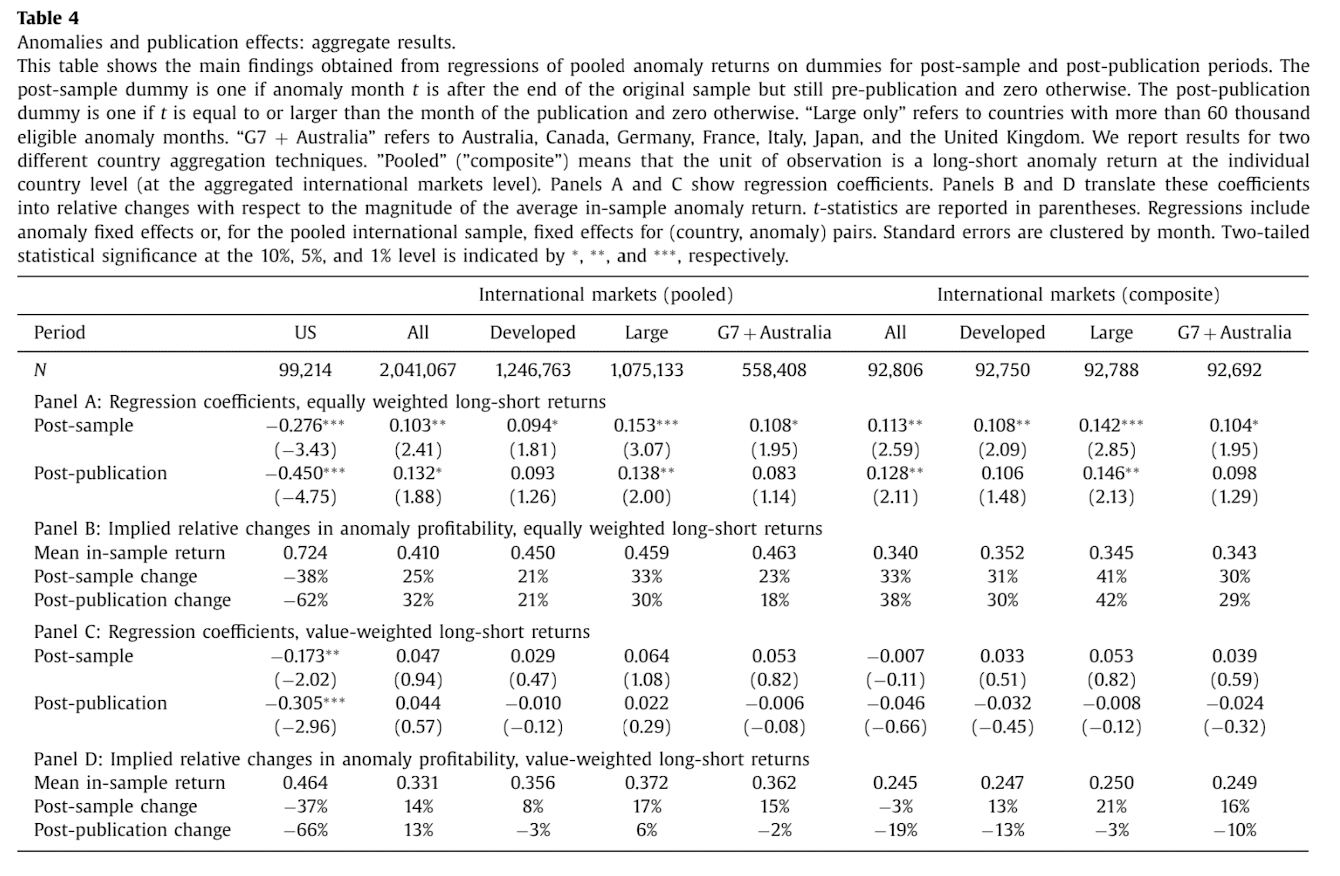📊 Performance
- US anomalies experience a 62% decline in profitability post-publication.
- Global anomalies do not show significant post-publication declines.
- In-sample returns are similar across developed markets, but post-publication declines occur only in the US.
💡 Key Idea
The paper analyzes 241 anomalies across 39 global stock markets and finds that only US anomalies significantly decline post-publication, suggesting arbitrageurs efficiently exploit mispricings in the US but face barriers elsewhere.
📖 Economic Rationale
- Efficient Markets Hypothesis (EMH): Once anomalies become public knowledge, rational arbitrageurs eliminate them through trading.
- Limits to Arbitrage: Institutional and regulatory barriers prevent global arbitrageurs from fully exploiting anomalies outside the US.
- Market Segmentation: Local constraints create fragmented markets where anomalies persist internationally.
⚡ Practical Applications
- Hedge funds & quant traders should focus on international anomalies, as they persist longer.
- Academic alpha strategies may degrade post-publication, requiring adaptation.
- Traders should consider market structure differences when designing global strategies.
🛠 How to Do It
🔢 Data
- CRSP (US) & Datastream (International) for stock market data.
- Compustat & Worldscope for accounting data.
- IBES for analyst forecasts.
📈 Model/Methodology
- Meta-analysis of 241 anomalies from peer-reviewed papers.
- Long-short portfolio construction: Top 20% (long) vs. bottom 20% (short).
- Comparison of in-sample, post-sample, and post-publication anomaly returns.
- Regression analysis: Tests whether anomalies decay after publication.
📊 Strategy
- Avoid US anomalies post-publication due to rapid arbitrage.
- Target international anomalies with limited arbitrage activity.
- Focus on anomalies in markets with high transaction costs & short-selling restrictions.
📌 Key Figure: Post-Publication Anomaly Decline

- Findings:
- The US market experiences a statistically significant 62% drop in long-short anomaly returns post-publication.
- No consistent post-publication decline is observed in international markets (G7 + Australia and pooled global markets).
- This suggests that arbitrageurs in the US rapidly eliminate anomalies, whereas international barriers prevent full arbitrage exploitation.
📄 Paper Details
Authors: Heiko Jacobs & Sebastian Müller
Journal: Journal of Financial Economics
Year: 2019
🔗 DOI: 10.1016/j.jfineco.2019.06.004
